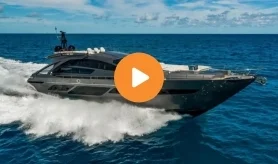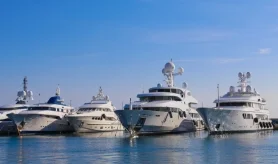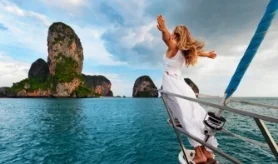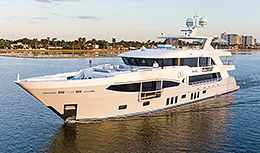- Alaskan Yachts
- Azimut Yachts
- Back Cove Yachts
- Beneteau Yachts
- Benetti Superyachts
- Bertram Yachts
- Boston Whaler
- Broward Yachts
- Buddy Davis Sportfish
- Burger Yachts
- Cabo Yachts
- Catamarans
- Carver Motoryachts
- Center Console
- Chris-Craft Yachts
- Cruisers Yachts
- DeFever Trawlers
- Dufour Sailboats
- Fairline Yachts
- Feadship Yachts
- Ferretti Yachts
- Formula Yachts
- Fountaine Pajot Cats
- Grady-White
- Grand Banks Trawlers
- Hargrave Yachts
- Hatteras Yachts
- Hinckley Picnic Boats
- Horizon Yachts
- Hydra-Sports
- Intrepid Boats
- Jarrett Bay Sportfish
- Jeanneau Yachts
- Kadey-Krogen Trawlers
- Lazzara Yachts
- Lekker Boats
- Luhrs Sportfish
- Marlow Yachts
- Maritimo Yachts
- Marquis Yachts
- McKinna Motoryachts
- Meridian Yachts
- Midnight Express
- MJM Yachts
- Mochi Craft
- Neptunus Motoryachts
- Nordhavn Trawlers
- Nordic Tugs
- Numarine Yachts
- Ocean Alexander Yachts
- Offshore Yachts
- Outer Reef
- Oyster Sailing Yachts
- Pacific Mariner Yachts
- Palmer Johnson Yachts
Mark Stothard: Behind the Lens
A picture speaks a thousand words but what makes a photo memorable? Is it a compelling composition? The stimulating subject matter? Or perhaps it’s the ability to tell the story you want told by shooting, stitching and bending the truth. Shipbuilding photographer Mark Stothard gives FRANK his take on reality.
When 276-foot superyacht WHITE RABBIT was delivered to her Singaporean owner in 2018, it hit the headlines for being the world’s biggest trimaran ever built. It’s also the largest yacht to ever come out of Australia, not to mention the largest yacht ever built by Echo Yachts. But for Mark Stothard, founder of the shipyard, the launch almost pales into insignificance when compared to the satisfaction he felt capturing the ‘golden arch’ image of the multi-hulled beauty cruising in a halo of sunshine. And that’s because for the aircraft engineer-turned-shipbuilder-turned-photographer, viewing life from behind the lens has become his passion.

The interview takes place in a pre-Covid world long before our current dystopian nightmare, but even then Zoom provides the perfect platform to meet the charismatic man from down under. There is a quintessentially Australian edge to Stothard, who lounges on his sofa at home in Perth tired from the day’s activities. It’s something about his easy manner, casual cursing and self-assuredness when talking about his own achievements. It’s less arrogance and more mindfulness of the sheer volume of explanation his life requires.
I empathize with the Aussie. It’s hard to know where to begin dissecting Stothard’s long and prolific career in the boat-building game. He started out in the 1970s as an aircraft engineer before selling diesel engines in the ’80s. By 1995, he’d launched his first company building aluminum commercial fishing boats.
It quickly grew into the third-largest aluminum shipbuilding company in Australia and, by 1998, was turning over AUD $50 million a year. Stothard sold the business to commercial yard Austal Ships, freeing himself up to pursue other interests. One such venture was expedition operator NorthStar Cruises, which takes guests deep into the heart of the wilderness aboard its purpose-built boat, TRUE NORTH.
“I had built a couple of the TRUE NORTH boats along the way and I really admired how Craig Howson was running that company,” he says. “He has very similar business principles to me, ‘do it once, do it right’. He asked me if I’d join him to buy his partner out and replace the 111-foot that I’d already built him with the 164-foot that we ended up with. So, I bought into the company in March 2003.”
Subsequent roles included working as owner’s representative for the Macau Venetian Casino (in Singapore) writing the tender for its fleet of new build ferries (it remains the largest ferry contract ever written in the world today), plus a stint working for the Trinidad government before he founded Echo Yachts in 2010.
When a former client resurfaced and asked Stothard if he could “find a shed big enough to build a 276-foot trimaran”, the story of WHITE RABBIT was born. But Stothard’s TRUE NORTH affiliation holds particular significance, for it was the catalyst that incentivized him to improve on his rather amateur photography.

“I was traveling to all these magnificent places on a beautiful boat and coming away with crap photos,” he says truthfully. “I hate doing things by halves, so if I’m going to do something, I’m going to do it really well, and I’m going to find the best person to teach me.”
True to form, Stothard tracked down renowned photographer Christian Fletcher, multiple winner of Australian Professional Landscape Photographer of The Year. The pair hit it off and he took Stothard under his wing, coaching him on the art of photography in exchange for his business expertise.
“He fast-tracked me so that in a year I was where it would take most people ten years to get to,” says Stothard. “So, then I was at a very similar stage to where he was at, and together we grew. We were both hungry to learn. It was at a time when digital photography was really taking off and the cameras were starting to get good, so we stayed with the best kit that we could buy and were taught by guys like Thomas Knoll, co-founder of Photoshop, and we really learned.”
The digital tutorship more than paid off and twelve years into his photography journey Stothard is today revered for his ability to pull off large multi-layer stitched images, some even reaching up to 2GB in file size and consisting of 36 separate photos stitched together. “I’ve got pretty good at it, pretty fast,” he confesses, describing his ability to triple-layer-stitch photos to pull the entire image into focus. His reputation for being a “stitch master” reached the holy limits of the Catholic Church, which commissioned Stothard to take a night shot of his hometown Perth. The black and white 36-image stitch, shot on a 200mm lens, now features on the wall of a hallowed church.
Underwater photography is another area of focus, partly to “get one over on Christian ’cause he hates the water and he’s not very good at it”, along with drone footage, which allows for sprawling aerial vistas of the world below, and night shooting. He feels particularly proud of a big stitch of the Milky Way, using a 14mm in portrait and creating a dreamlike trail of the starry night sky.
“I really like shooting that stuff ’cause it’s hard and not many people can do it,” he says. “If you shoot no more than 20 seconds, you’ll get stars. If you go any longer than 20 seconds, you get lines ’cause the Earth moves a little bit. So, whatever you’ve got to do to get your exposure right, you can’t go past 20 seconds, that’s what I’ve learned.”

In terms of inspirational landscapes, there have been plenty, but Iceland tops the bill. “That place rocks,” he enthuses. “It’s like shooting a moonscape.” Surrounded by waterfalls and three nights of the kaleidoscopic aurora borealis, Stothard only scratched the surface of his creativity on the Nordic landmass and vows to return. “There was ice on the black beach and an old DC3 plane wreck in a lava field, which was really cool. It’s the most amazing place I’ve ever been to.”
But epic locations are only one element of a great picture. Stothard has had to learn the art of patience, too. “Being in an awesome spot is great but being in an awesome spot with shit light is really bad!” he says. It took him four separate visits to a Papua New Guinean stilt village on the Sepik River before he got the picture he’d been craving.

“The first three years I went there I thought, ‘this would look incredible in the right light’, but the light was so high. It was blue skies, but it may as well have been a black and white scene. But this year, boom, I got it really good. The light was just sensational. And I got the drone up and took some awesome shots.”
A lot of photography is about timing and luck, he says, although he also believes you make your own luck. But there’s little doubt that viewing life through a lens has opened his eyes to the world around him, while his already extensive experience in skydiving equipped him with the necessary skills to learn fast and learn well. He has successfully completed over 3,500 jumps in his life and won countless gold medals in free-fall competitions. In 1998, he established one of the best drop zones in the Southern Hemisphere.
“Learn it, earn it and burn it,” he states. “That’s how I describe my learning process when I was competing at elite level in skydiving.” During the state championships, when Stothard and his skydiving crew had exhausted the knowledge resource available in Australia, they brought over international coaches and trained for two weeks at a time, sometimes doing twelve jumps a day.
“We’d learn the principles of how we were going to do it. We’d earn it by doing it and critiquing it. Then once we’d fixed the mistakes, we’d burn it,” he describes. “That’s what I do with photography. When Christian or anyone teaches me a new trick I’ll go out and shoot the shit out of whatever that new trick is and process it over and over again until it becomes a motor action and I don’t have to resort to notes anymore.”
Stothard transitioned out of skydiving to buy into TRUE NORTH. He was having issues with his partners and the repetitive physical demands had begun to take their toll on his body. It appears to have been a smart move, with his travels on TRUE NORTH taking him to areas of unimaginable beauty, from the arid plateau of the Atacama Desert to witnessing thunderstorms rolling in on the isolated coastline of Australia’s Kimberley region.
Wherever he is, his rule of thumb is to always be ready – “if I see it, I shoot it” – and that means, always having a camera to hand. Aside from his trusty Nikon D850 and his backup Nikon D810, he always has his drone with him and his fallback option, the camera on his iPhone 11. And then, it’s down to Mother Nature to let the good times roll.

“There’s nothing I like better than standing in the scene where you’ve got some fast-moving clouds and you might work there for two or three hours and see it change so much with the evolving light. The light might be moving down to a sunset and the clouds start glowing and illuminating. If someone had said to me 15 years ago that I’d feel comfortable sitting on a beach at sunset taking photos, I’d say, ‘You’re nuts!’, ’cause I’m normally a people person, but I’m very comfortable in my own space now and really enjoy just being out there with the elements and seeing the scenes like that evolve.”
That’s not to say, however, that Stothard isn’t always in control of the story that he’s telling with his pictures. When NorthStar Cruises required images of TRUE NORTH in front of the dual drop waterfall of King George Falls in the Kimberley, the beautifully collated final picture belies the truth.

“When I got there, TRUE NORTH was in position, but the tenders and helicopter weren’t. So, I sat for three hours with the tripod in exactly the same spot, got all I needed and pulled it all together,” he explains. “When TRUE NORTH was in the waterfall the rainbow wasn’t there, but I’d shot it earlier, so I pulled the rainbow in. Then the tender was taking guests to walk up the hills, so I dropped that in later, along with the helicopter that flew over the top of me.”
All the necessary components were in play, just not at the same time. Of course, most people who see the final photo won’t realize that, but does that matter? “Nah,” he says confidently. “Photography is all about telling the story you want told.”
Request a Copy [FRANK Issue 2]
From intelligent debate to cutting-edge science, and risky sports to surreal charter experiences, FRANK does not shy away from the awkward, controversial, or questionable details. Brazen at times, amusing in spirit, and always transparent in discussion, the focus is on discovering new angles and enjoying every minute. And, of course, always being ‘frank’ about the conclusions.
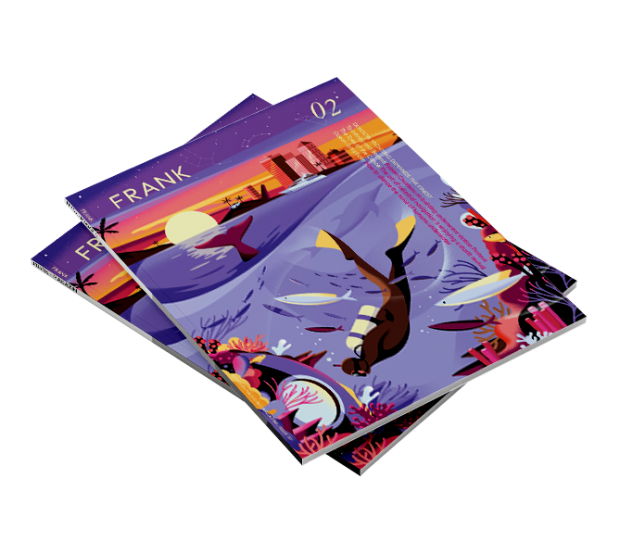
Request A Copy
